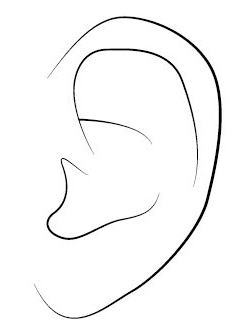
Welcome to Decrypting the Cryptic #8! In this series, we’ll be taking apart common cluing conventions used in American cryptic crosswords to build your confidence in solving a puzzle variety that can be, as its name implies, especially challenging. Sounds like it’s time for homophones! (See what I did there?)
Cryptic crosswords make lots of use of homoNYMs — that is, a word that has two meanings with different etymologies (and possibly different pronunciations). We explored that in the double definitions post. But why stop at homonyms when you can play with homoPHONEs as well? Homophones are words that sound the same, even though they are spelled differently, like BASE and BASS (the latter in its “low voice” sense, not its “food fish” sense) or HEAR and HERE.
When a word is being clued using a homophone, there will always be an indicator of some kind that you’re to sound out what’s being clued rather than taking the clued word directly. (There will still be a direct cluing of the word in the direct definition; this is just in the wordplay portion of the clue.) These indicators can include, but are not limited to:
- A reference to hearing: “I heard,” “in the ear,” “listened to”
- Words about speaking: “orally,” “out loud,” “said,” “recited”
- “Reportedly” and its synonyms
- “On the radio,” “broadcast,” “over the airwaves,” etc.
Now that I’ve told you some common indicators, here’s a simple example:
Example #1: Ram heard objection (4)
The answer is BUTT. The straight definition is “Ram,” or BUTT in the sense of head-butting someone. It’s also a homophone for BUT, which is an “objection,” and the word “heard” indicates that you’re looking for a homophone. And remember how I told you that enumerations are themselves clues? That’s how you know that you’re to look for BUTT and not BUT. (Without an enumeration or a puzzle grid, you’d have to guess, because the indicator word is adjacent to both “Ram” and “objection.”)
Note that, unlike with anagrams, in which the constructor must give you actual words to be anagrammed, NOT synonyms of those words, in the case of homophones the constructor is free to clue a synonym of the homophone. (We can’t go too easy on you — they’re called cryptics, after all!)
The thing about simple homophone examples is that they’re kind of boring. The best cryptic constructors (of whom I do not consider myself one — yet!) are able to string together some pretty elaborate homophonetic (is that a word? I’m declaring it one if it isn’t) phrases that are hilarious when you figure them out. Here’s an example straight Out of Left Field:
Example #2: Revolutionary permitted to be recited — and recited audibly (4,5) (Clue credit: Joshua Kosman and Henri Picciotto, Out of Left Field #6; subscription required to view full puzzle)
This one’s extra tricky because there are a couple of words — “recited” and “audibly” that could be the indicator. In the end it’s “to be recited” that is the indicator, and “audibly” is part of the definition. The answer is READ ALOUD, or “recited audibly” in the straight definition. But READ ALOUD is also homophonetic with RED ALLOWED, in which “red” comes from “Revolutionary” in the clue and ALLOWED comes from “permitted.”
Homophones aren’t as common as the other clue types we’ve discussed thus far because, as I mentioned, the simple ones are kind of boring and the complicated ones are hard to get to as a constructor. I, for one, have not yet managed to produce a good multi-word homophonetic clue yet, but I’ll build a whole damn puzzle around it and then throw a party when I do.
That explains homophones for ya! Feel free to ask questions in the comments, and don’t forget to check out #crypticclueaday on Twitter. I post a new clue each day using that hashtag (other constructors have been adding their own as well), and every week on #explanationfriday I give the solutions and a brief explanation of how to derive them. These clues are a great way to hone your cryptic solving skills and build your confidence up to solving a full puzzle.

One thought on “Decrypting the Cryptic #8: Homophones”